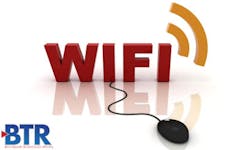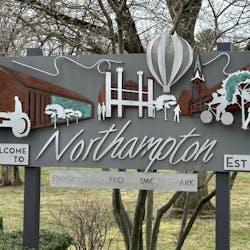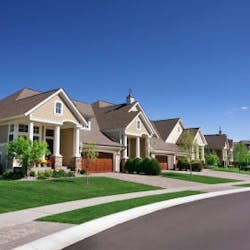It is not hard to visually affirm that new homes have been increasing in size, but Pew Research Center confirms it: A statistic indicates that new homes are 60% larger than in 1973. At the same time, the number of client devices is also rising.
One access point (AP) for WiFi often is not enough to allow for reliable connection and ubiquitous speed to multiple devices throughout a large home.
"One of the easiest and most cost-effective ways to provide whole-home WiFi coverage is by using WiFi itself to connect together the APs in the home," John Bahr, CableLabs' lead architect, wireless technologies, wrote in a recent blog. "In the past year, there has been a dizzying array of product announcements and introductions for home WiFi coverage, with many of them using mesh networking."
A mesh AP network is a self-healing, self-forming, self-optimizing network of mesh access points (MAPs). The ideas is that the MAPs communicate with each other to determine the optimal path for moving data. Both client-steering (making sure each WiFi client is connected to the best AP) and band steering (keeping clients on the optimal band, 2.4 GHz or 5 GHz) are important. Otherwise throughput suffers and latency issues could occur.
"The (client) could be sitting next to the repeater, but the AP isn't very far away either. The iPad will connect to the repeater, but (then it) sends its data twice over the air. It may be better to connect to the access point directly," Bahr said.
CableLabs is working toward standardization of an AP Coordination protocol, which will allow all APs in a home network to share information in order to make client steering decisions, among other things, Bahr said.
"We have been working with vendors and talking about this problem for about a year. A lot are doing work independently, and a lot is proprietary," Bahr said. "There is some work starting up now in the Open Source area where hopefully we will get contributions … that will help define this standard."
If the Open Source route does not pan out, CableLabs will go to standards bodies. "We are not sure which horse is going to win," Bahr said.
Cable operators, for their part, have been helping to determine the goals of AP Coordination, which include client and band steering. These will be encapsulated, however, inside a larger protocol which helps also with communication between access points at initial powerup to help with auto-configuration, for example. There could also be a proactive network management interface to allow operators to pull out key performance indices.
"AP Coordination is a very large project. Client steering is the first goal we are trying to tackle. It is the most immediate problem heard from our members," Bahr said.
As for a timeline, Bahr said that open source projects are hard to predict, but the hope is that something will be seen mid-2017.





